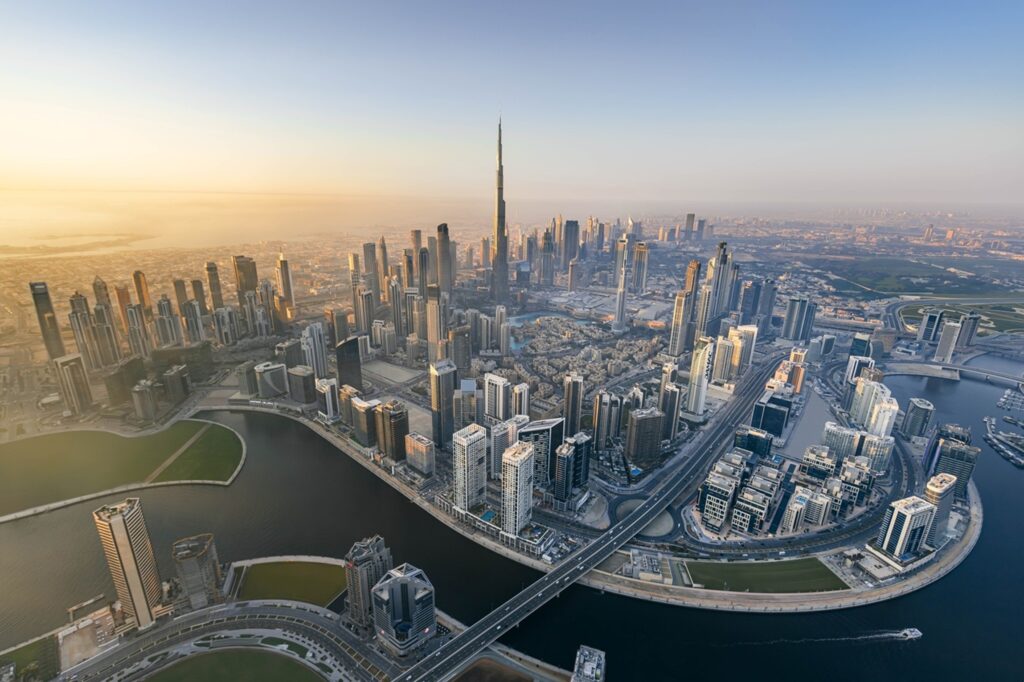
IMAGE COURTESY: Global Finance
GCC Sovereign Wealth Funds Lead in Global Investments in 2023
The Assets Under Management (AUM) of the sovereign wealth funds (SWFs) of the six-member Gulf Cooperation Council (GCC) region reached a historical peak of $4.1 trillion, and the investment activity, even if slightly lower than in 2022, amounted $ 82.3 billion, the Global SWF said.
In its annual report, Global SWF said that the activity was led by the “Oil Five” – the five SWFs such as Public Investment Fund (Saudi Arabia), Abu Dhabi Investment Authority and ADQ (all three from the UAE) and Qatar Investment Authority (Qatar).
Among them, Saudi Arabia’s Public Investment Fund was the lead investor with $31.6 billion deployed in 49 deals in 2023, 33% more than the previous year. PIF, in a short span of eight years since its reformulation, became a powerhouse both at home and overseas, with the objective of advancing Vision 2030 and of becoming the world’s largest SWF by 2030, the report said.
Together with PIF, four other Gulf funds, one from Qatar and three from the UAE, were at the Top 10 most active dealmakers globally. Singapore’s GIC and Temasek, too were active but not as much as in 2022, by three of the “Maple Eight” Canadian funds (CPP, BCI, OTPP).
Canada’s CDPQ (Fund of the Year in 2022) maintained a lower profile in 2023 and dropped from the Top 10 list. Overall, Singaporean and Canadian funds reduced their activity by -51% and -36% respectively, while GCC investors were almost flat.
The regional preferences of the top investors are changing and there seems to be a renewed interest in emerging markets. Half of the leader-board invested more in emerging markets than in any other region in 2023, with strong interest in China, Indonesia, Brazil, and India, which went up in the ranks to become the second most popular destination after the US, and ahead of the UK and of China.
In terms of industries, over a quarter of the investments in 2023 were in real estate, an interest in relative terms that was not seen since 2014. Financials and infrastructure stayed popular too, with 19% and 18% of the deals respectively.
Investment in industrial conglomerates increased due to the domestic investments of Gulf investors, while technology is increasingly integrated with other industries.
Co-Investments Gain Traction
Co-investments were becoming more and more popular and for the first time grew over $30 billion. The GCC and Canadian funds were prevalent in co-investments, as well as the king of co-investment GIC.
State- Owned Investors also sustained significant divestment activity, including IPOs that allowed Middle Eastern funds to monetize some of their most valued domestically grown assets, the report explained.
Lastly, most sovereign investors saw their US equities portfolio grow due to the recovery in share values. Interest remained high in Indian stocks, while it waned in European and Chinese equities, the report said.
Many Reasons
The recovery of financial markets and sustained high oil prices boosted the industry’s AuM globally while the SWFs recovered markedly and peaked at $11.2 trillion. Public Pension Funds (PPFs) increased their assets to $23.1 trillion; and Central Banks (CBs) stayed almost flat at $15.4 trillion. “We expect the three groups to reach a combined $50 trillion once again, and pass the 2021 peak at some point in 2024 as they recognise the paper gains most institutions have enjoyed during the past 12 months,” Global SWF said in the report.
New SWFs
As many as five new SWFs were set up – Maharlika Investment Fund (the Philippines), the Hong Kong Investment Corporation (Hong Kong), Pakistan SWF (Pakistan), Kosovo SWF and the Sovereign Fund of Mozambique (Mozambique). Another 10 countries are likely to estanlish their respective SWFs this year.
The sovereign investors also opened nine representative offices, mostly in New York, London and Singapore, in order to attract more investments and also scouting for opportunities to invest across the world.















